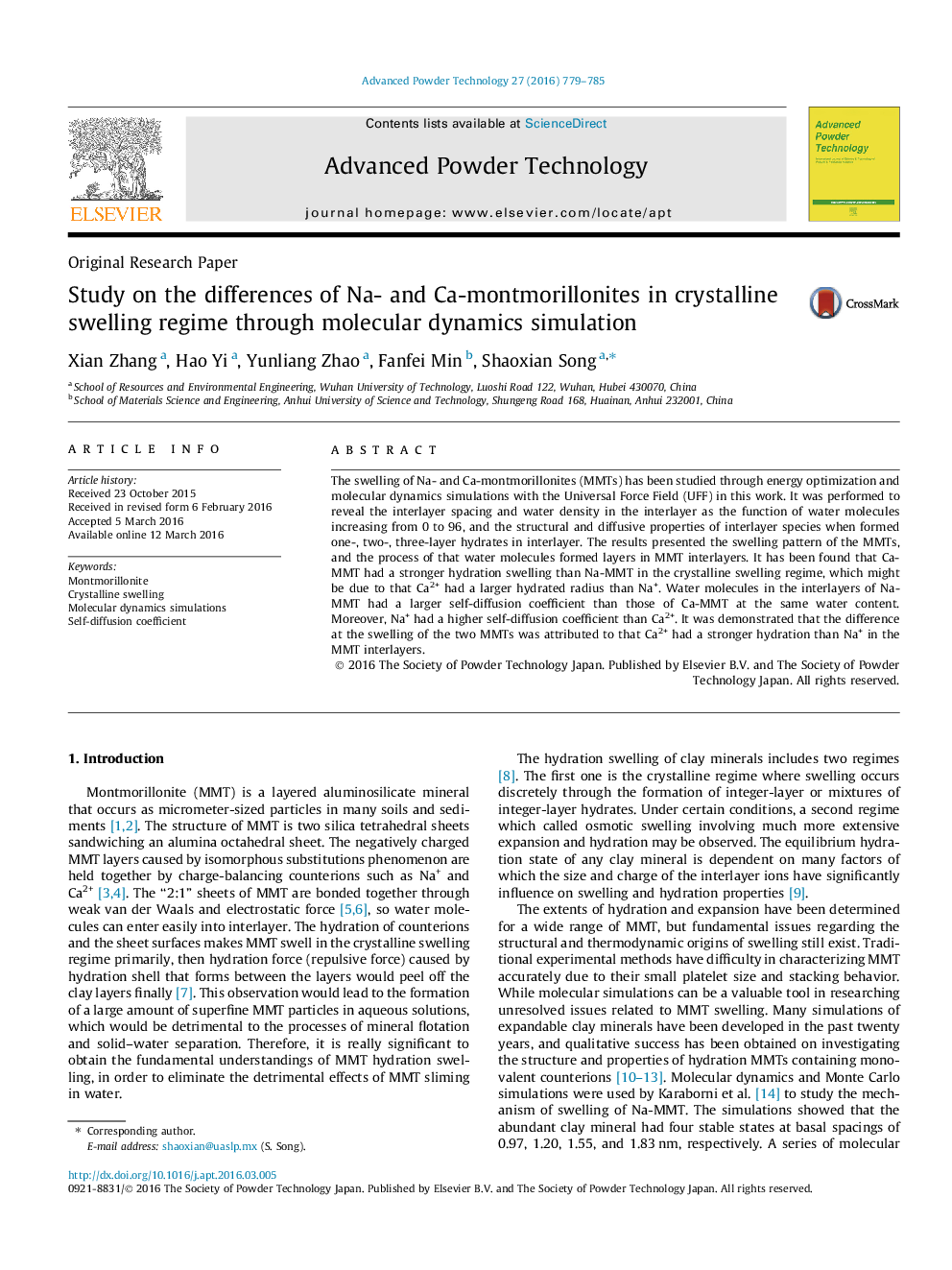| Article ID | Journal | Published Year | Pages | File Type |
|---|---|---|---|---|
| 144157 | Advanced Powder Technology | 2016 | 7 Pages |
•Presented an atomic-level understanding of swelling of MMT.•Found that Ca-MMT had a stronger hydration swelling than Na-MMT.•Found that water molecule in Ca-MMT had a smaller self-diffusion coefficient than in Na-MMT.•Found that Na+ had a higher self-diffusion coefficient than Ca2+ in MMT interlayers.
The swelling of Na- and Ca-montmorillonites (MMTs) has been studied through energy optimization and molecular dynamics simulations with the Universal Force Field (UFF) in this work. It was performed to reveal the interlayer spacing and water density in the interlayer as the function of water molecules increasing from 0 to 96, and the structural and diffusive properties of interlayer species when formed one-, two-, three-layer hydrates in interlayer. The results presented the swelling pattern of the MMTs, and the process of that water molecules formed layers in MMT interlayers. It has been found that Ca-MMT had a stronger hydration swelling than Na-MMT in the crystalline swelling regime, which might be due to that Ca2+ had a larger hydrated radius than Na+. Water molecules in the interlayers of Na-MMT had a larger self-diffusion coefficient than those of Ca-MMT at the same water content. Moreover, Na+ had a higher self-diffusion coefficient than Ca2+. It was demonstrated that the difference at the swelling of the two MMTs was attributed to that Ca2+ had a stronger hydration than Na+ in the MMT interlayers.
Graphical abstractFigure optionsDownload full-size imageDownload as PowerPoint slide
